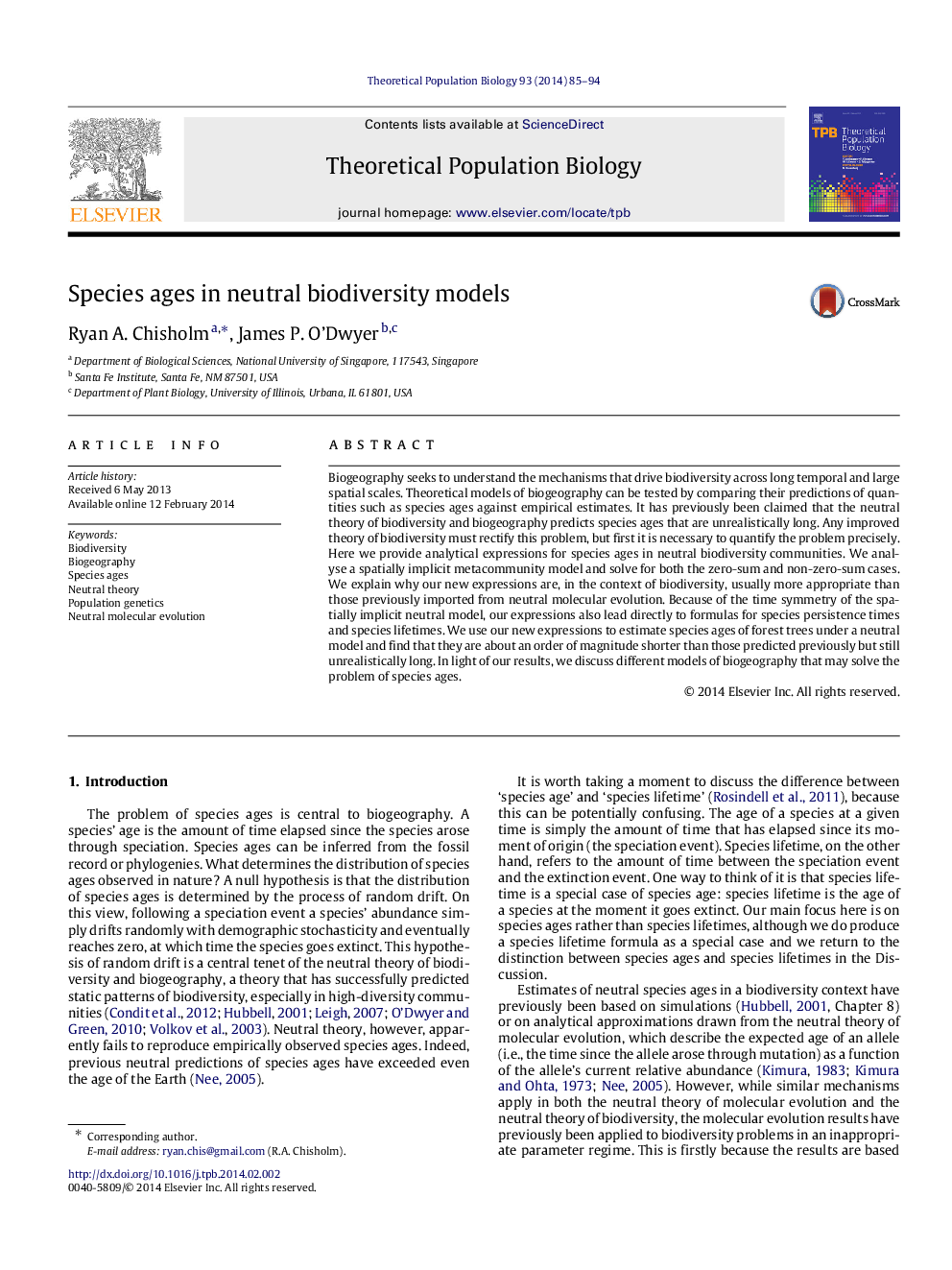| Article ID | Journal | Published Year | Pages | File Type |
|---|---|---|---|---|
| 4502345 | Theoretical Population Biology | 2014 | 10 Pages |
Abstract
Biogeography seeks to understand the mechanisms that drive biodiversity across long temporal and large spatial scales. Theoretical models of biogeography can be tested by comparing their predictions of quantities such as species ages against empirical estimates. It has previously been claimed that the neutral theory of biodiversity and biogeography predicts species ages that are unrealistically long. Any improved theory of biodiversity must rectify this problem, but first it is necessary to quantify the problem precisely. Here we provide analytical expressions for species ages in neutral biodiversity communities. We analyse a spatially implicit metacommunity model and solve for both the zero-sum and non-zero-sum cases. We explain why our new expressions are, in the context of biodiversity, usually more appropriate than those previously imported from neutral molecular evolution. Because of the time symmetry of the spatially implicit neutral model, our expressions also lead directly to formulas for species persistence times and species lifetimes. We use our new expressions to estimate species ages of forest trees under a neutral model and find that they are about an order of magnitude shorter than those predicted previously but still unrealistically long. In light of our results, we discuss different models of biogeography that may solve the problem of species ages.
Related Topics
Life Sciences
Agricultural and Biological Sciences
Agricultural and Biological Sciences (General)
Authors
Ryan A. Chisholm, James P. O'Dwyer,
